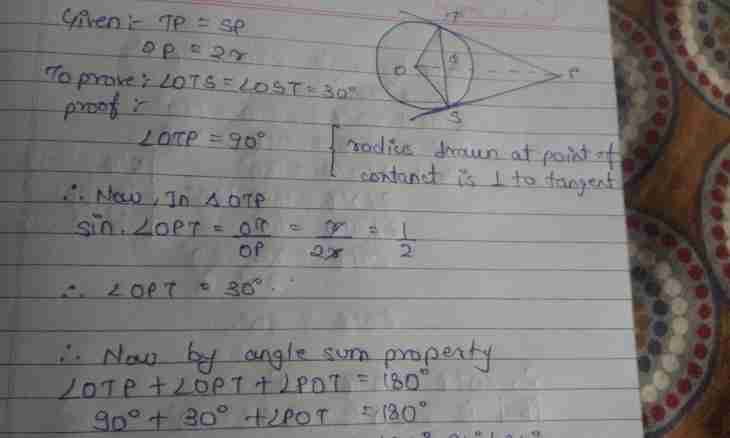The tangent to a curve — a straight line which adjoins to this curve in the set point that is passes through it so that on the small site around this point it is possible to replace without special loss of accuracy a curve with a tangent piece. If this curve is a function graph, then the tangent to it can be constructed on the special equation.
Instruction
1. Let's assume that you have a schedule of some function. Through two points lying on this schedule it is possible to draw a straight line. Such straight line crossing the schedule of the set function in two points is called a secant. If, leaving the first point on the place, gradually to move the second point in its direction, then the secant gradually will begin to turn, striving to some certain provision. After all, when two points will merge in one, the secant will densely adjoin to your schedule in this only point. In other words, the secant will turn into a tangent.
2. Any inclined plane (that is not vertical) a straight line on the coordinate plane is the schedule of the equation of y = kx + b. The secant passing through points (x1, y1) and (x2, y2), has to correspond to conditions, thus: kx1 + b = y1, kx2 + b = y2. Solving this system of two linear equations, we receive: kx2 - kx1 = y2 - y1. Thus, k = (y2 - y1) / (x2 - x1).
3. When the distance between x1 and x2 tends to zero, differences turn into differentials. Thus, in the equation of the tangent passing through a point (x0, y0) the coefficient of k will be equal ∂y0/∂ to x0 = to f ′ (x0), that is value derivative of the f (x) function in x0 point.
4. To learn b coefficient, we will substitute already calculated value k in f equation ′ (x0) *x0 + b = f(x0). Solving this equation b is relative, we will receive that b = f(x0) - f ′ (x0) *x0.
5. The final version of the equation of a tangent to the schedule of the set function in x0 point, looks so: y = f ′ (x0) * (x - x0) + f(x0).
6. As an example we will consider the tangent equation to the f (x) function = x^2 in x0 point = 3. Derivative of x^2 it is equal 2x. Therefore, the equation of a tangent takes a form: y = 6 * (x - 3) + 9 = 6x - 9. It is easy to check correctness of this equation. The schedule of a straight line of y = 6x - 9 there passes through the same point (3;9), as the initial parabola. Having constructed both schedules, you will be able to make sure that this straight line really adjoins to a parabola in this point.
7. Thus, the function graph has a tangent in x0 point only when function has a derivative in this point. If in x0 point the function possesses a rupture of the second sort, then the tangent turns into a vertical asymptote. However only one existence of a derivative in x0 point does not guarantee indispensable existence of a tangent in this point yet. For example, the f (x) function = |x| in x0 point = 0 is continuous and differentiated, but it is impossible to carry out a tangent to it in this point. The standard formula in this case gives y equation = 0, but this straight line is not a tangent to the schedule of the module.

